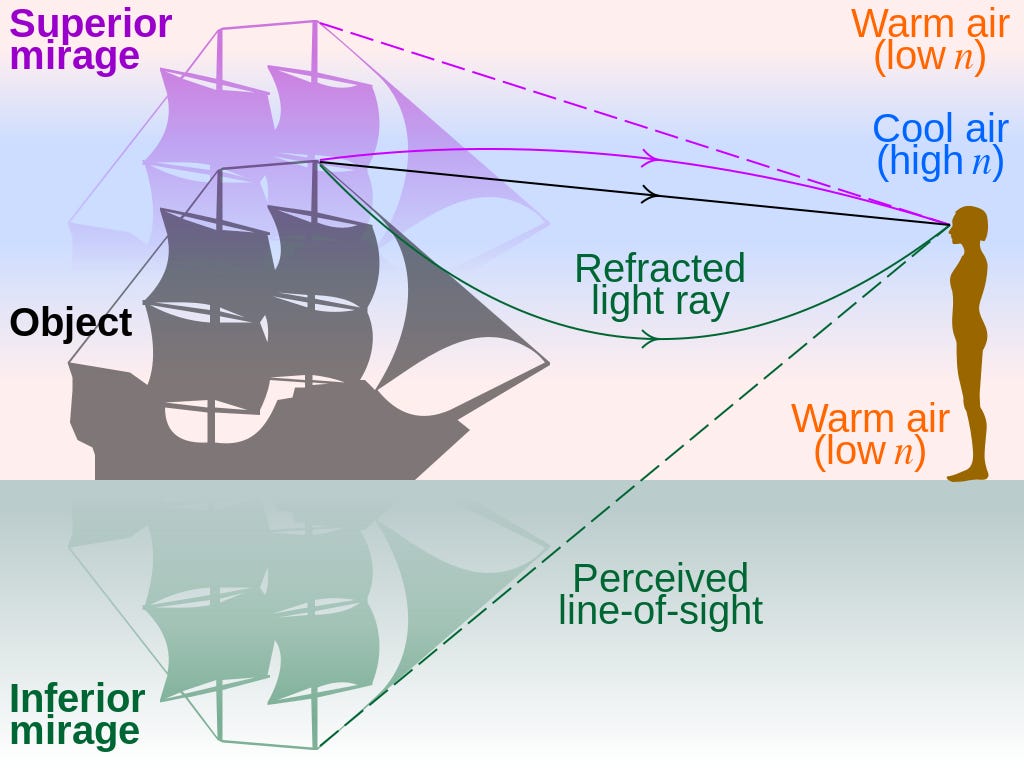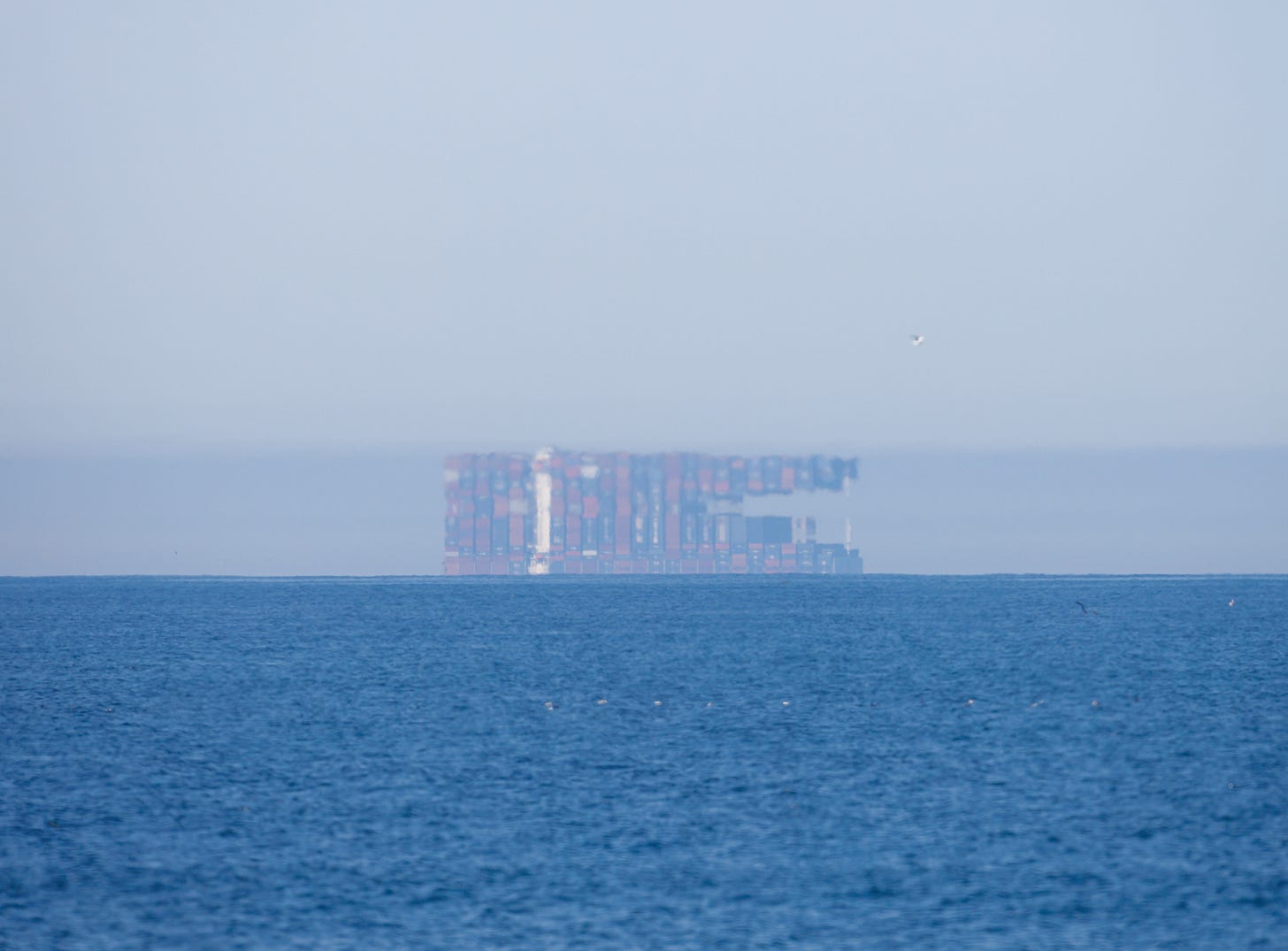What causes mirages over water?
From the beach, you spot a boat on the horizon that appears to hover several feet above the water’s surface. Or maybe a distant island seems to tower unnaturally high, its base stretched into vertical columns. The coastline shimmers and warps, sometimes appearing as multiple stacked images of itself. These are mirages, light bending through layers of air at different temperatures.
Most people associate mirages with desert heat, where unreachable phantom pools of water shimmer on hot roads. Those are inferior mirages, so named because the false image appears below the actual object. Over water, the opposite typically occurs. Superior mirages form when cold air sits below warm air, a condition called a temperature inversion that reverses the normal atmospheric arrangement.
Large bodies of water create these inversions naturally. Water temperature changes slowly compared to air, so during the day, air several meters above the ocean surface can be significantly warmer than the thin layer touching the water. At night, the ocean retains its heat while air temperatures drop, maintaining that inverted temperature profile. The ocean acts as a massive thermal buffer, creating stable conditions that can persist for hours or even days.

Air density changes with temperature, and light speed changes with density - our old friend refraction. Colder air packs molecules tighter together, creating a higher refractive index. Light traveling from warm air into cold air bends toward the denser medium, following Snell’s law just like light entering water from air. In a temperature inversion over water, light from a distant ship travels through cooler and denser air as it approaches the surface. The light rays curve downward. To an observer’s eye, which assumes light travels in straight lines, those curved rays appear to originate from a point higher than the ship’s actual location. The ship seems to float above the water.
Sharp temperature changes over short vertical distances bend light dramatically, while gentler gradients create subtler effects. Multiple temperature layers can create multiple images stacked on top of each other, alternating between upright and inverted as light takes increasingly complex paths through the atmospheric structure.
When conditions are just right, a temperature inversion can become so steep that light rays curve more sharply than Earth’s surface curves. This creates an atmospheric duct that traps light rays and guides them along Earth’s curvature rather than letting them escape into space. The result is a Fata Morgana, named after Morgan le Fay from Arthurian legend, who was said to conjure false castles to lure sailors.

A Fata Morgana displays rapidly changing, heavily distorted images with alternating compressed and stretched sections. The images shift and morph within seconds as atmospheric conditions fluctuate. Polar explorers frequently encountered these, seeing ice formations transformed into elaborate structures. The phenomenon requires being within or below the atmospheric duct to observe, which is why different observers at different altitudes might see dramatically different versions of the same mirage.
Over hot pavement, turbulent mixing makes inferior mirages shimmer and dance. Over water, properly layered air remains stable for extended periods because cold air has no tendency to rise and warm air has no tendency to sink. Arctic explorers saw phantom lands solid enough to name and chart, only to have them vanish as conditions changed. The distortions are common, happening over any large body of water with the right temperature profile, but most go unnoticed unless they’re dramatic enough to make boats appear to float.
Further Reading:

